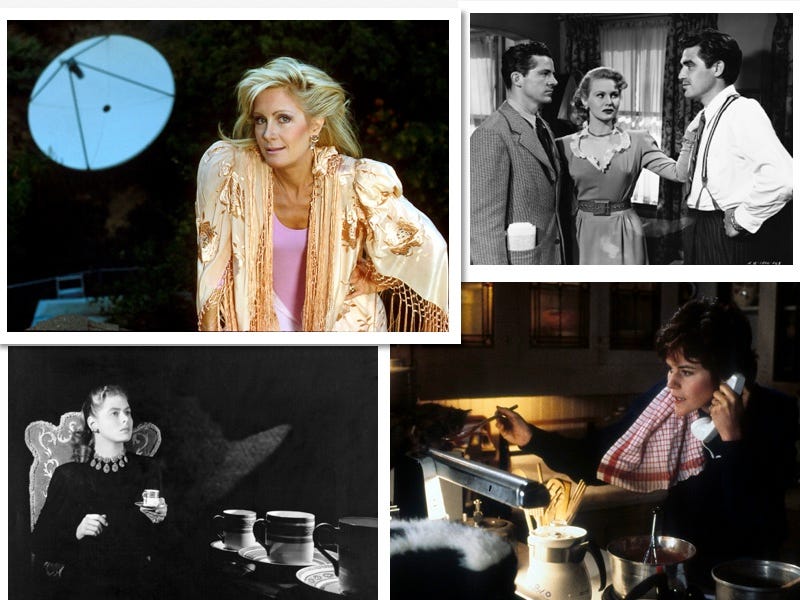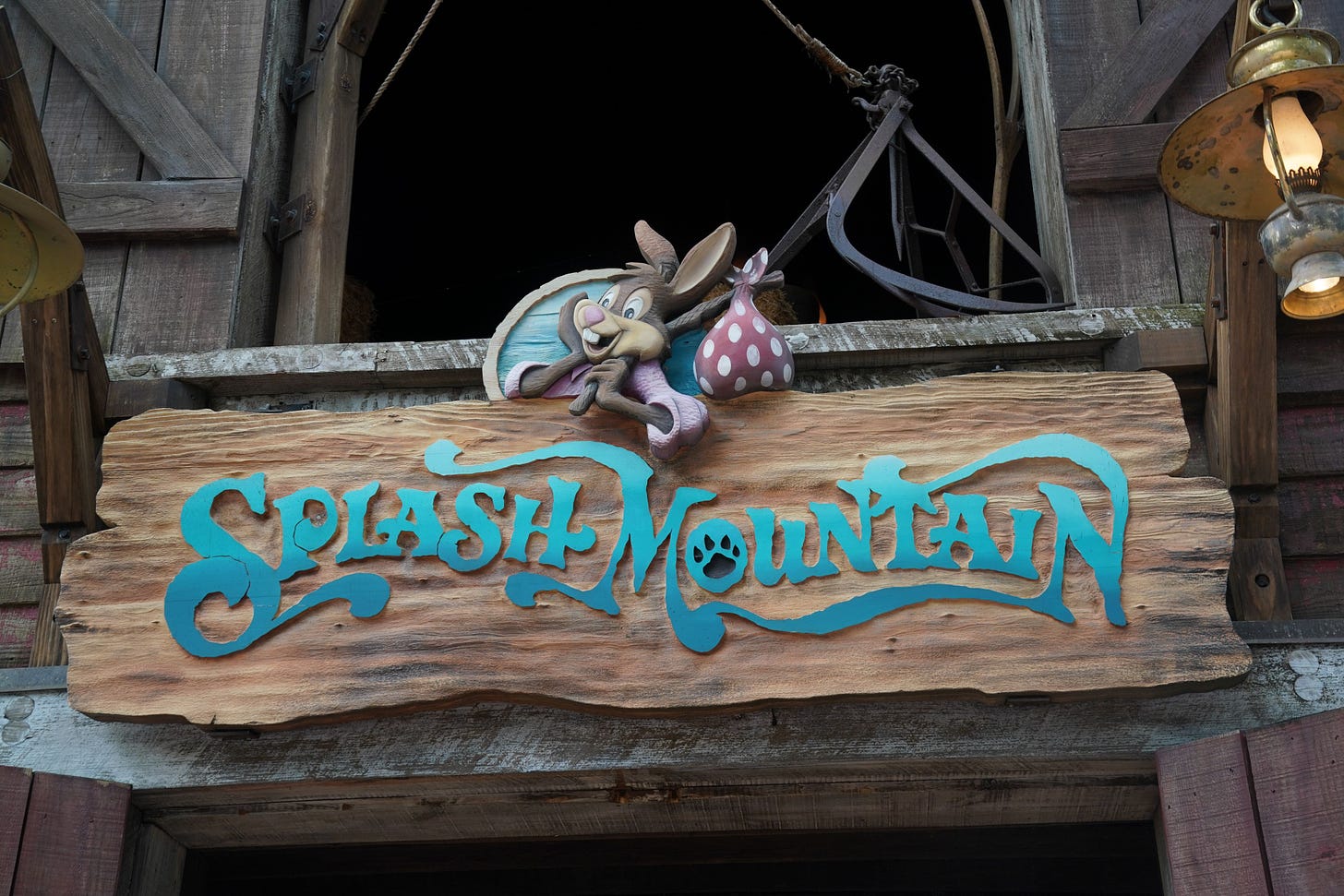If ‘80s Were ‘40s: A Thought Experiment About Franchises And Time
What if today's franchise-crazed era had actually taken place in the '40s? It might look a little like this (but probably not).
Last week, screenwriter C. Robert Cargill tweeted “This summer is a stark reminder of Gen X’s weird insistence that our movies and music aren’t old or classic. Several of our favorite movies turn 40, and despite the fact that we saw them as children, we refuse to acknowledge they are the equivalent to watching Casablanca in the ’80s.” As with all sweeping pronouncements about generations and taste, elements don’t stand up to scrutiny. I fall firmly in the middle of the Gen X demographic and I know the stuff I grew up watching is old. It looks older with each passing year, too. Tom Cruise may be weirdly ageless, but the Top Gun: Maverick scene where his character visits Val Kilmer’s Iceman is poignant because Kilmer is not ageless. Even ravaged by disease he looks handsome and noble, but he’s also a living acknowledgement that a lot of time has passed between 1986 and now. He’s older. We’re older. I feel it all the time, and the world isn’t shy about providing reminders.
There’s a larger point worth exploring in that tweet, however. We’re living in an era dominated by franchises, many of which can trace their roots back to a stretch spanning the late-’70s through the ’90s. (Roughly. You could start with Star Wars in 1977 and end with Mission: Impossible in 1996, but Mission: Impossible was itself a remake of a TV series from the ’60s.This isn’t an exact science, but it’s broadly true.) So, I understand how it can sometimes seem like Gen X (and, to be fair, adjacent generations) is trying to extend a cultural moment into eternity.
The Reveal is a reader-supported newsletter dedicated to bringing you great essays, reviews and conversation about movies (and a little TV). While both free and paid subscriptions are available, please consider a paid subscription to support our long-term sustainability.
For instance, on June 8th, Sony and the production company Ghost Corp, headed by Jason Reitman and Gil Kenan, issued an announcement of a bunch of Ghostbusters projects, including a sequel to Ghostbusters: Afterlife, an animated film, a VR experience, a new comic book series, and a line of commemorative plates. (One of these, admittedly, is not true.) The announcement came on the anniversary of the release of the first Ghostbusters film in 1984, and Sony and Ghost Corp are now dubbing June 8th Ghostbusters Day. (Mark your calendars, all who celebrate.) To be clear, Ghostbusters is a great movie. It’s also the only great movie the franchise has produced. Nonetheless, it looks like we'll be bustin' for a while, whether or not it makes us feel good.
Remakes and reboots have always been with us, of course. 1987 alone produced both a big-screen version of Dragnet and the short-lived The New Monkees. But even these were a product of a moment in which IP recycling was just part of the entertainment landscape, not the predominant mode.
This got me thinking: Ghostbusters is now a 38-year-old film. It’s spawned one immediate sequel, a remake, and last year’s Afterlife, a peculiar (and mostly dreadful) “legacyquel” that passed the torch to a new generation — at least up to a finale that found the originals essentially snatching that torch back again. (That’s to say nothing of the animated series, comics, video games and other offshoots the film has spawned.) That’s a perfectly of-the-moment example of reboots and IP management. But it makes me wonder: What would it look like if the franchise mentality shifted back to the era that gave us Ghostbusters?
The distance between 2022 and 1984 is equal to the distance between 1984 and 1946. Here are the five top-grossing films of 1946:
Song of the South
Notorious
The Best Years of Our Lives
Duel in the Son
The Jolson Story
In our alternate version of 1984, each of these would be targets for some kind of revival, be it sequel, reboot, or remake. As a point of reference, here are the top five films of 1984, all of which are still very much with us in one form or another: Ghostbusters, Beverly Hills Cop (a fourth film has long been in development), Indiana Jones and the Temple of Doom (fifth installment coming next year), Gremlins (an animated series debuts this week), and The Karate Kid (Cobra Kai’s fifth season premieres this September). What would the 1984 versions of these 1946 favorites look like?
Song of the South: Sequel
It’s tempting to say this would be DOA for obvious reasons, but consider this: Song of the South was regularly re-released to theaters until 1986 and provided the theme to Disney Parks’ Splash Mountain attraction from the late-‘80s through 2020. Splash Mountain most likely provides the best indication as to what a Song of the South sequel would have looked like in 1984: lots of cute critters, not a lot of Uncle Remus and sentimental nostalgia for an Old South where slavery might have been abolished but everyone still knew their place. And, hey, why if an ‘84 sequel worked, why not in the 2000s release Br’er Rabbit, Br’er Fox, and Br’er Bear solo films, then bring them together for a mega-blockbuster a la The Avengers?
Notorious: TV Series
Ingrid Bergman was no longer with us in 1984, and Cary Grant had been retired since Walk, Don’t Run in 1966, so a sequel would be out of the question. But a TV version? Why not? In this sexier spin on Hart to Hart, Mark Harmon and Joan Van Ark seduce and destroy—in a standards-and-practices-friendly way—Nazis and other global menaces in a variety of exotic locations.
The Best Years of Our Lives: Prequel
Sure, we know what happened to Al, Fred, and Homer after they returned to Boone City. But that’s only half the story. This prequel will fill in the missing pieces via a thrilling, action-packed tale of wartime adventure. You haven’t really seen the best years of these men’s lives until you’ve seen their worst. (Cast with unknowns with familiar faces like Burt Reynolds and Dustin Hoffman taking key supporting roles. Walter Hill is attached to direct but the job ultimately goes to John Badham.
Duel in the Sun: Remake
What began as a straightforward remake has morphed into a kind of “spiritual sequel” set in a Texas high school. Most of the racial subtext and sexual themes will be toned down, and though the tragic ending will be filmed test audiences will reject it as too much of a “downer.” In the end, the film will only faintly resemble the source material but, in a nod to the original, Joseph Cotten plays the school principal. (Ally Sheedy and Judge Reinhold star.)
The Jolson Story: Remake (eventually canceled)
This will be much-discussed but will die in development because Neil Diamond’s Jazz Singer remake underperformed in 1980.
In the end, none of these are successful, but everyone is too busy fan-casting the Ma and Pa Kettle revival to care.






ok, you've sold me on the Notorious series
Me love this premise, although it worth noting that 80s actually were very 50s-obsessed, as besides usual generational nostalgia, conservatives dominated Reagan-era culture and were fixated on pre-desegregation glory days. So 1984 franchising 1956 actually pretty plausible. Brat Pack actors would have murdered each other over who got to star in remake of Giant. Me could absolutely see cheesy spectacle of Around World in 80 Days getting greenlight.
And if you squint googly eyes, you can see one 1956 moving actually having franchise in 1984 — Forbidden Planet was direct inspiration for Star Trek, and Search For Spock, best odd-numbered Trek film by country mile, came out that year.